15+ Stylish Orange Couch Living Room Ideas
1. Tame brightness with a soft neutral backdrop
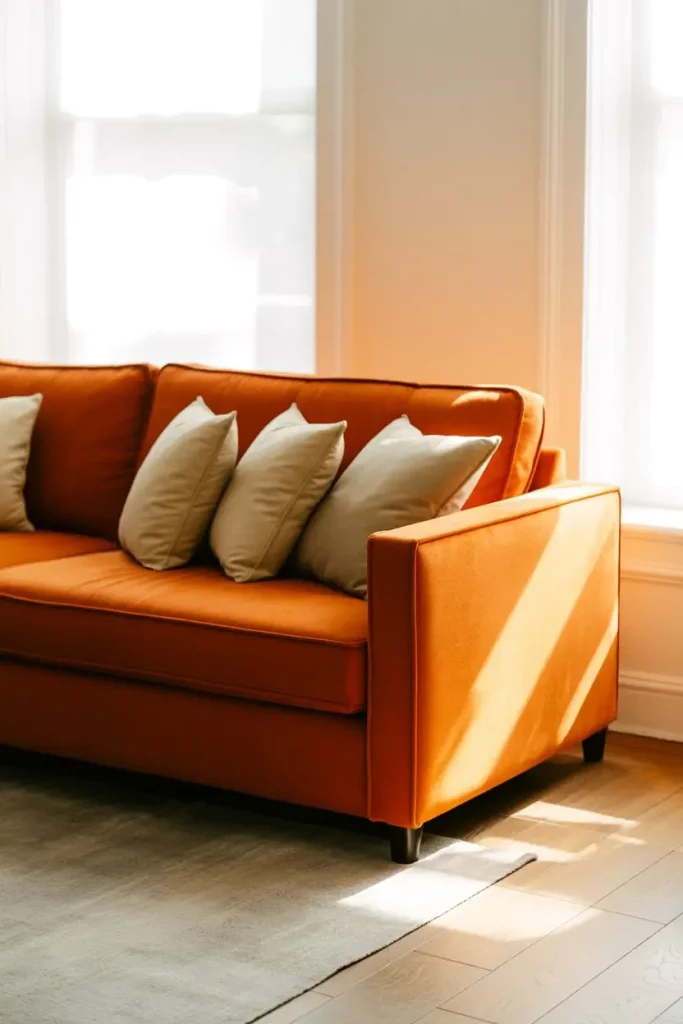
An orange couch looks bold next to soft walls. Paint walls in warm cream, pale beige, or light gray to calm the color. These neutral tones let the orange stand out without shouting. Use a matte finish on the walls so light falls gently. If you have white trim, keep it crisp to frame the couch. Flooring that is light wood or pale tile will help the orange couch feel grounded. This setup makes the sofa the star and keeps the rest of the room peaceful.
2. Pair with deep blues for grown-up contrast
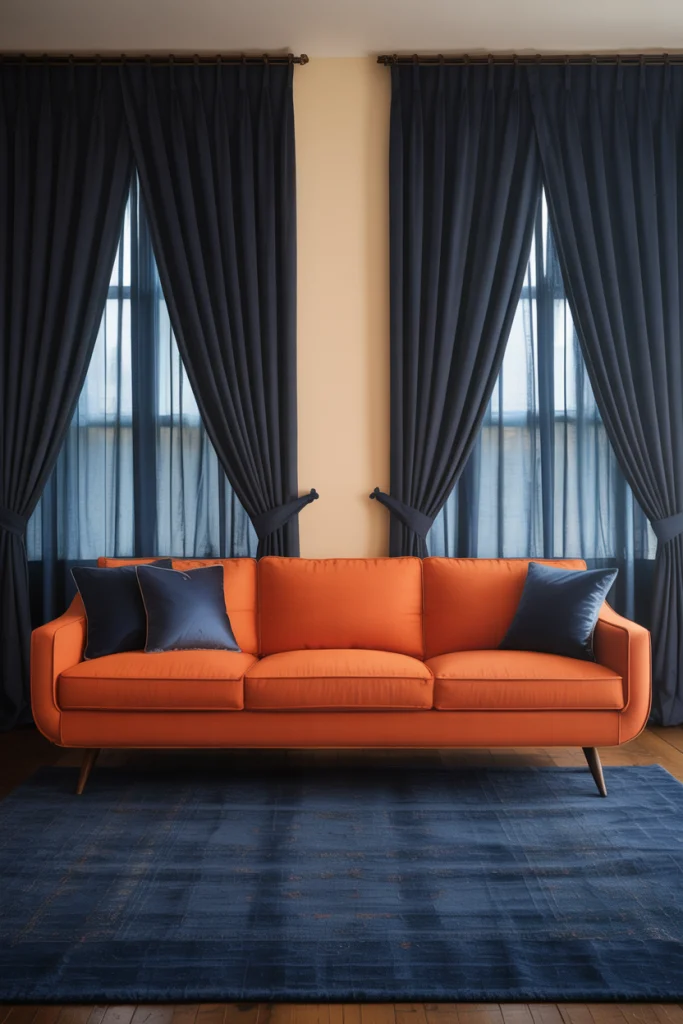
Dark blue is a strong partner for orange. Add a navy rug, deep blue curtains, or a few blue pillows to balance the warmth. The blue makes the orange look richer and more refined. Keep blue in just a few places so it reads as a deliberate choice, not a crowd. When the two colors meet, the room feels energetic but controlled. This is a smart move for living rooms that need a bold look that still feels comfortable.
3. Use earthy greens to soften the palette
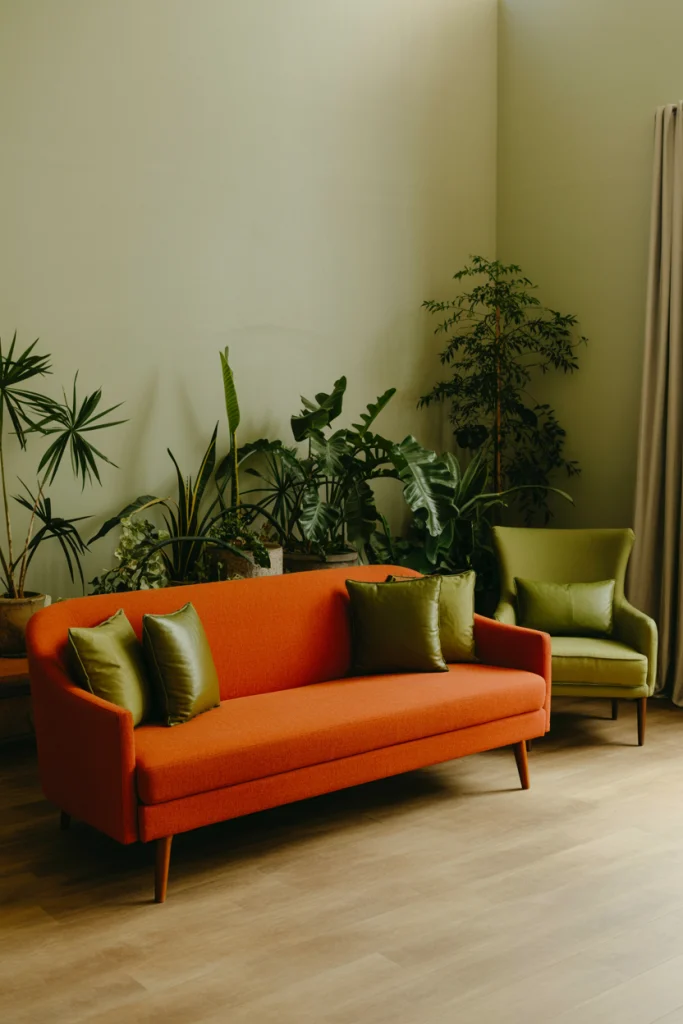
Muted green tones make orange feel natural. Olive, moss, or sage greens in plants, cushions, or an armchair add a calm, earthy touch. Living plants work very well; they bring life and texture. If you use green textiles, choose fabrics with a low sheen so the look stays warm. The orange couch then reads like part of a cozy, natural scheme rather than a bright stage prop.
4. Anchor with a simple, textured rug
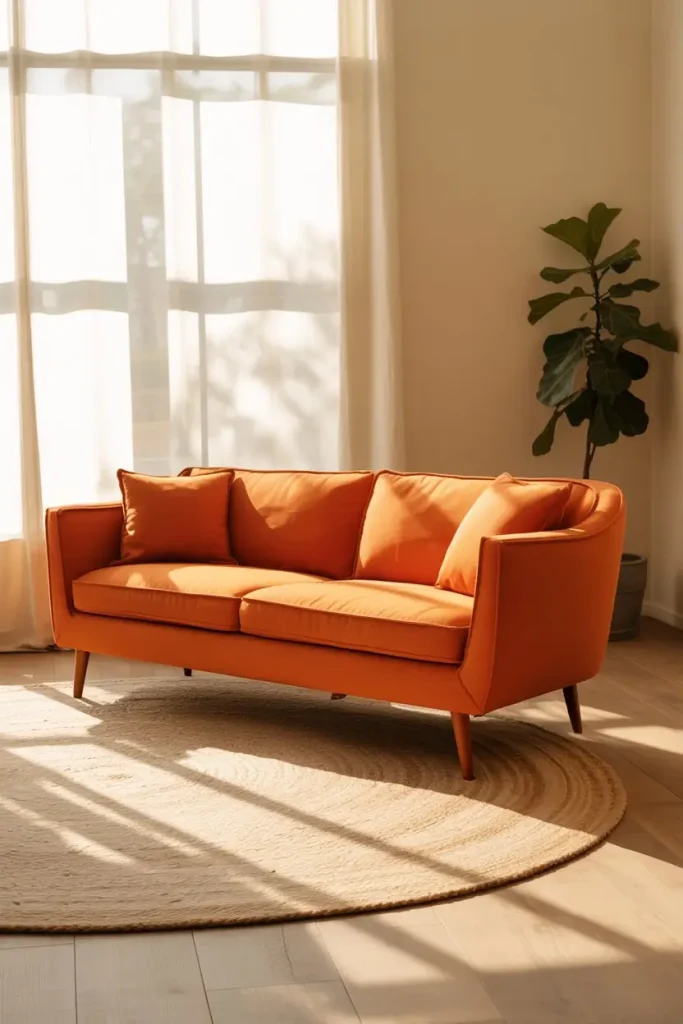
A rug can make the sofa feel part of the room. Choose a rug with texture rather than loud pattern if the couch is bright. Jute, low-pile wool, or a soft loop weave will ground the furniture without competing. Size the rug so the front legs of the couch sit on it. This small rule makes the area feel intentional and tied together. A rug with subtle tones drawn from the room will calm the orange while keeping the area warm.
5. Layer soft textiles for comfort and depth
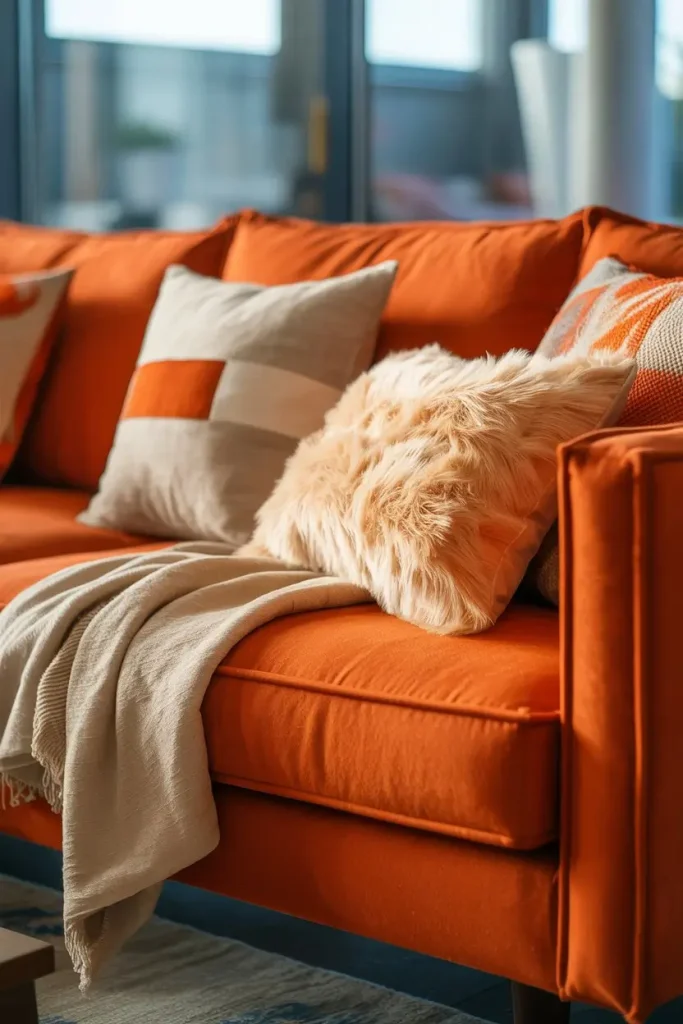
Throw blankets and pillows help the orange couch look lived in, not staged. Pick soft fabrics like brushed cotton, linen, or knit throws. Add at least one pillow in a neutral tone and one pillow with a small-scale pattern that includes orange. Keep shapes varied but the palette small. This way the couch reads as cozy and tactile. The extra layers also make the seat more inviting to sit on every day.
6. Balance with warm wood tones
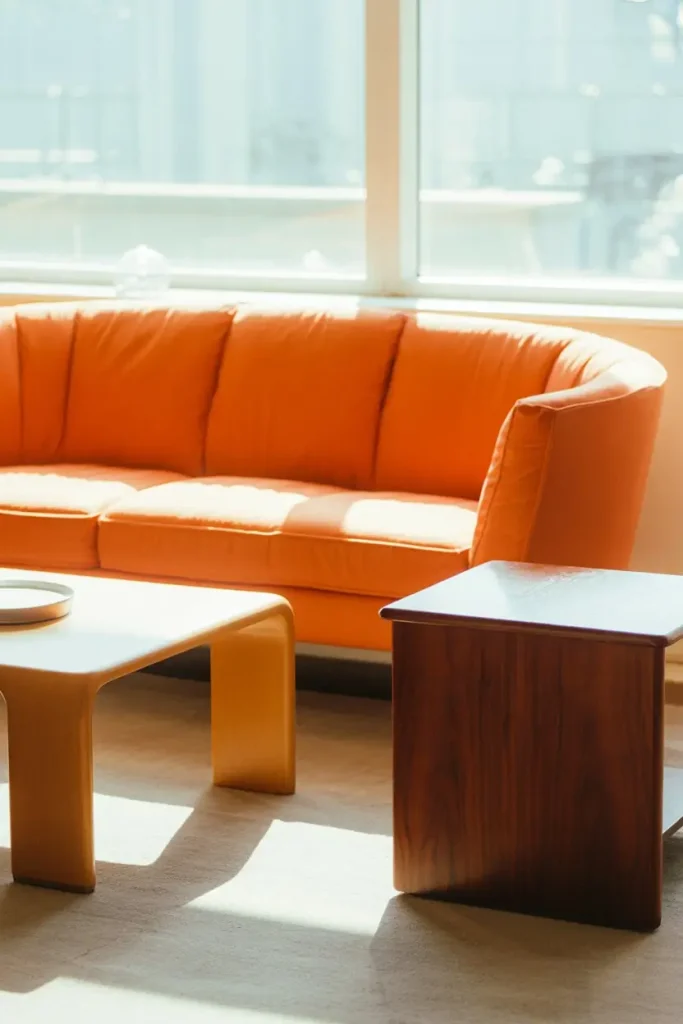
Wood furniture pairs naturally with orange. Choose medium to dark woods to create warmth that matches the couch. A wooden coffee table or side table with clean lines works well. Mix finishes carefully: avoid too many different woods at once. If you have light oak floors, add one darker wood piece to anchor the area. The wood brings calm and a sense of home, so the orange feels like the right color for living, not just show.
7. Choose artwork that speaks the same language
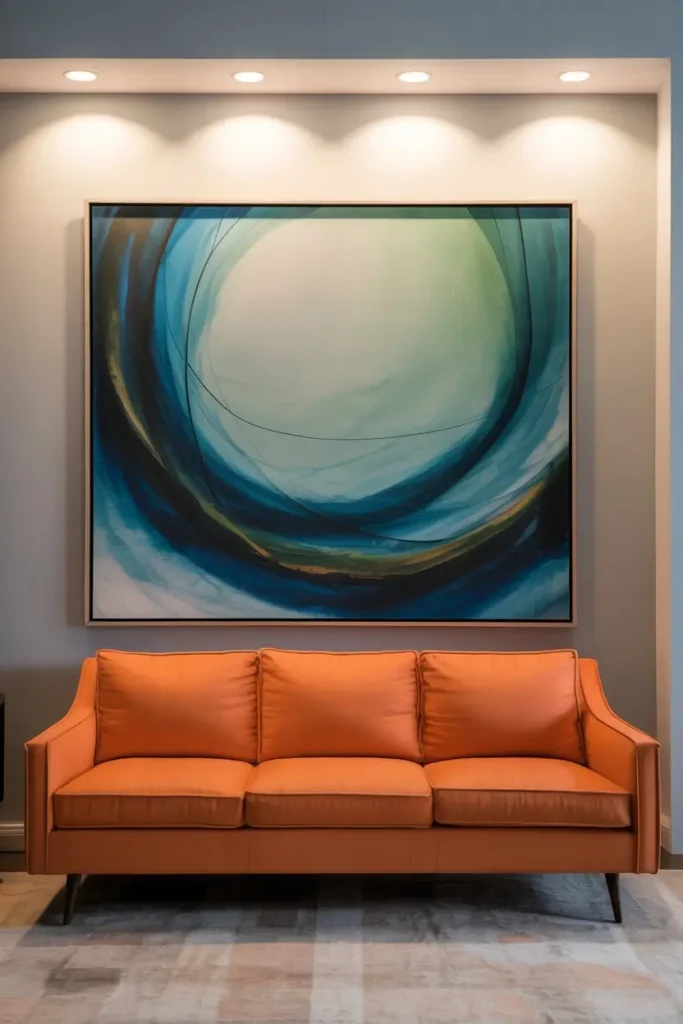
Art helps the orange couch look wise and complete. Pick one or two pieces that echo the couch color but also introduce another tone, like blue, green, or soft black. Large-scale art above the sofa creates a focal point and balances the color below. Keep frames simple and let the art breathe. A well-chosen piece will make the orange feel considered and modern.
8. Go monochrome for a bold, sleek vibe
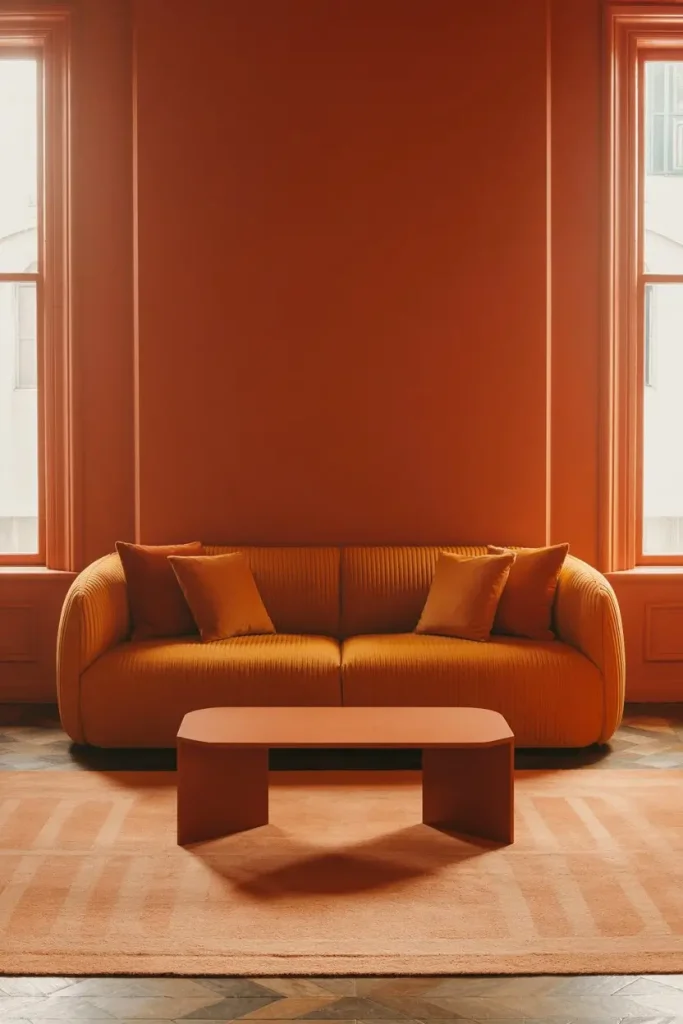
If you love color, try a mostly orange room with different shades and textures of the same hue. Soft terracotta walls, rust pillows, and a pale orange rug can feel warm and layered. Keep shapes and scales simple so the look does not feel busy. Use white or cream trim to break the color. This technique reads like design intent and is surprisingly calm when done with restraint.
9. Use metallic accents to add polish
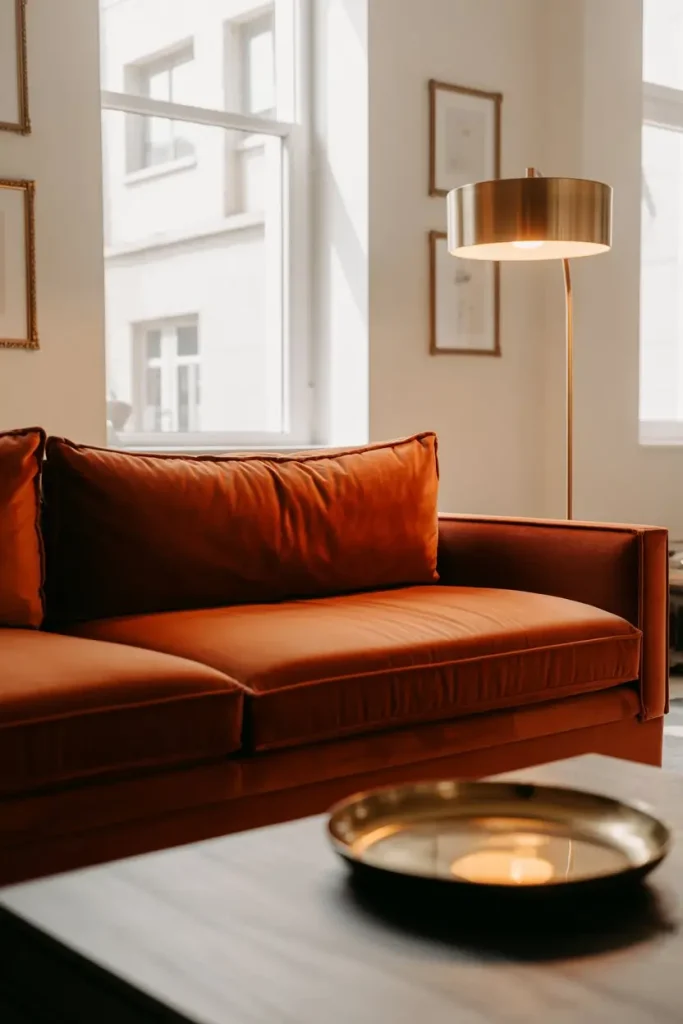
Small metal touches lift the look. Brass, warm gold, or aged bronze lamps and picture frames pair well with orange. Use metal sparingly so it does not compete. A brass floor lamp beside the couch or a small metal tray on the coffee table adds shine and a sense of finish. These touches make the space feel curated and cared for.
10. Work with scale: choose furniture to match the sofa size
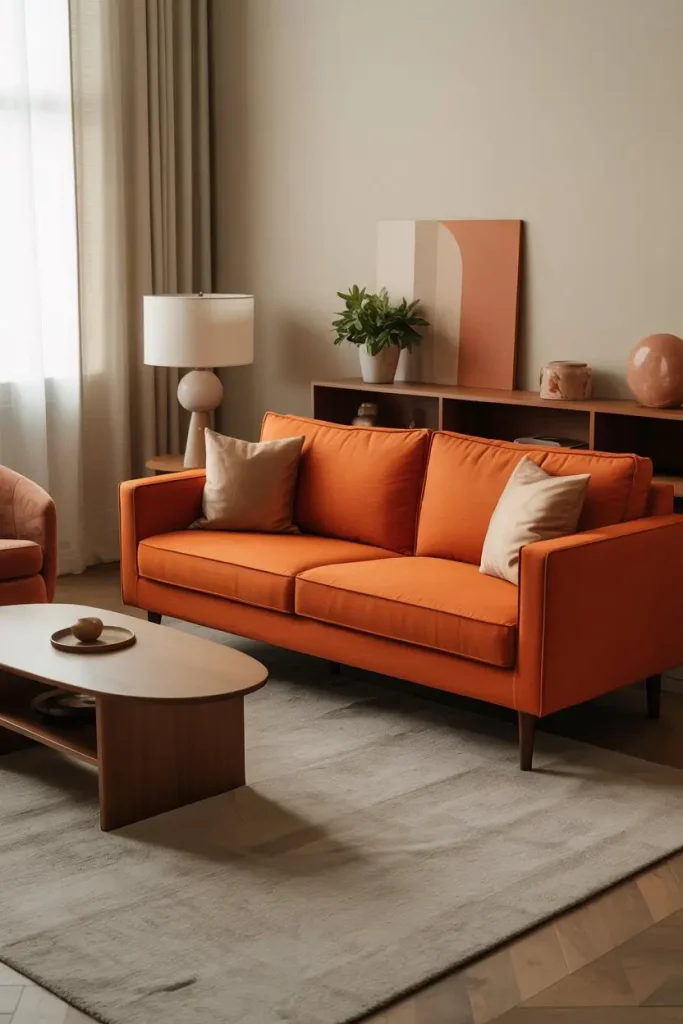
The size of nearby furniture changes how the couch reads. If the orange sofa is large, add a slim coffee table and low console to keep sightlines open. If the sofa is compact, a round coffee table and a plush armchair will balance it. Avoid tiny pieces that make the couch look heavy. Proper scale ensures the orange remains a pleasant part of the room, not a visual problem.
11. Let lighting shape the color mood
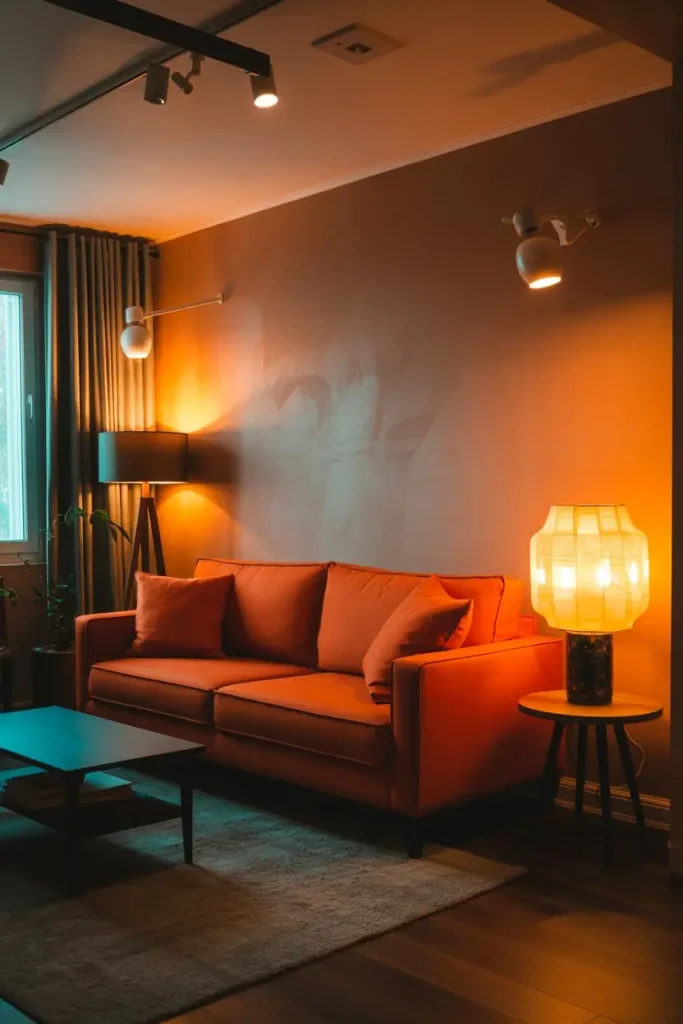
Different lights change how orange looks. Warm light makes it cozy. Cool light makes it brighter and sharper. Use a mix of light sources: a floor lamp for reading, a table lamp for mood, and overhead light for tasks. Dimmer switches are a simple way to tune the mood. Directional lighting can highlight artwork or a textured wall behind the couch to add depth and interest.
12. Introduce pattern sparingly for personality
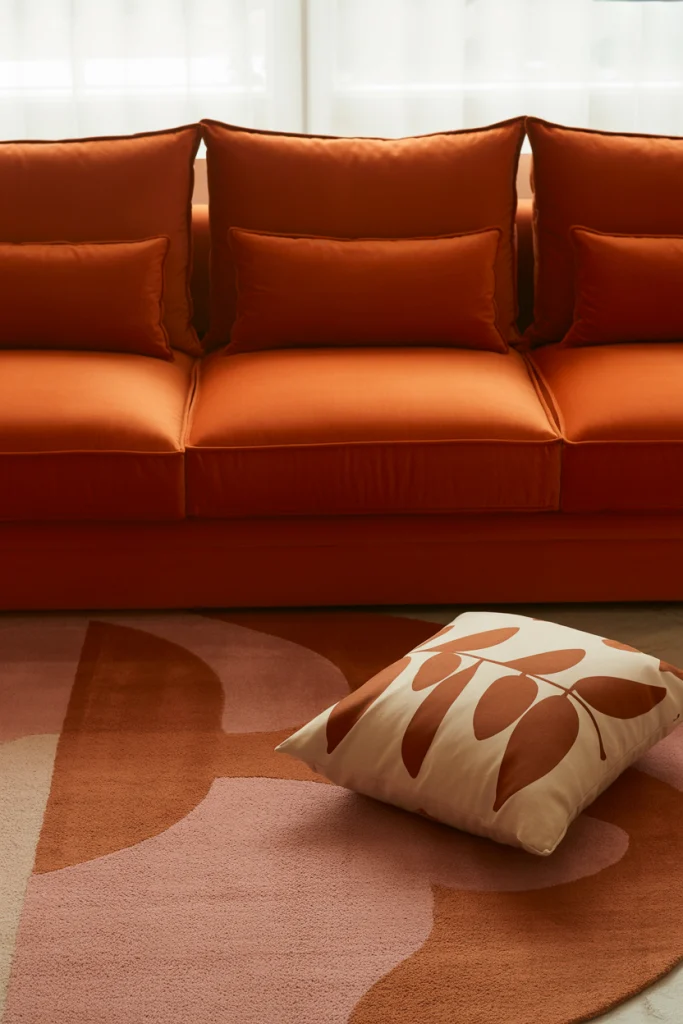
Patterns add character but should not fight the sofa. Choose small or medium patterns that include a tone from the couch. A rug or pillow with a subtle repeat will add life without clutter. Keep patterns to a few pieces only. Let the orange remain the common thread so the room feels cohesive. When patterns are limited and well-placed, the space feels lively and calm at once.
13. Make the couch a focal point with clear sightlines
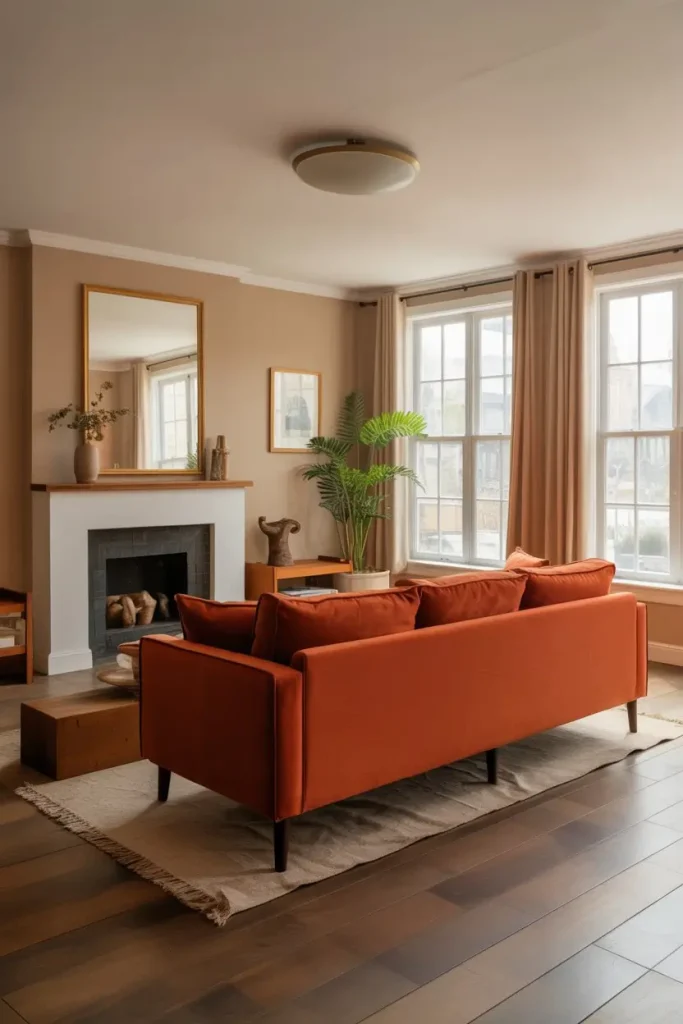
Place the orange couch where it can be seen and enjoyed. If your living room has a fireplace or a view, position the couch so it faces or frames that feature. Avoid pushing it into a corner where it is hidden. A sofa that sits clearly in the room becomes a stage for conversation and comfort. This makes the orange feel intentional and friendly rather than accidental.
14. Use plants to add scale and freshness
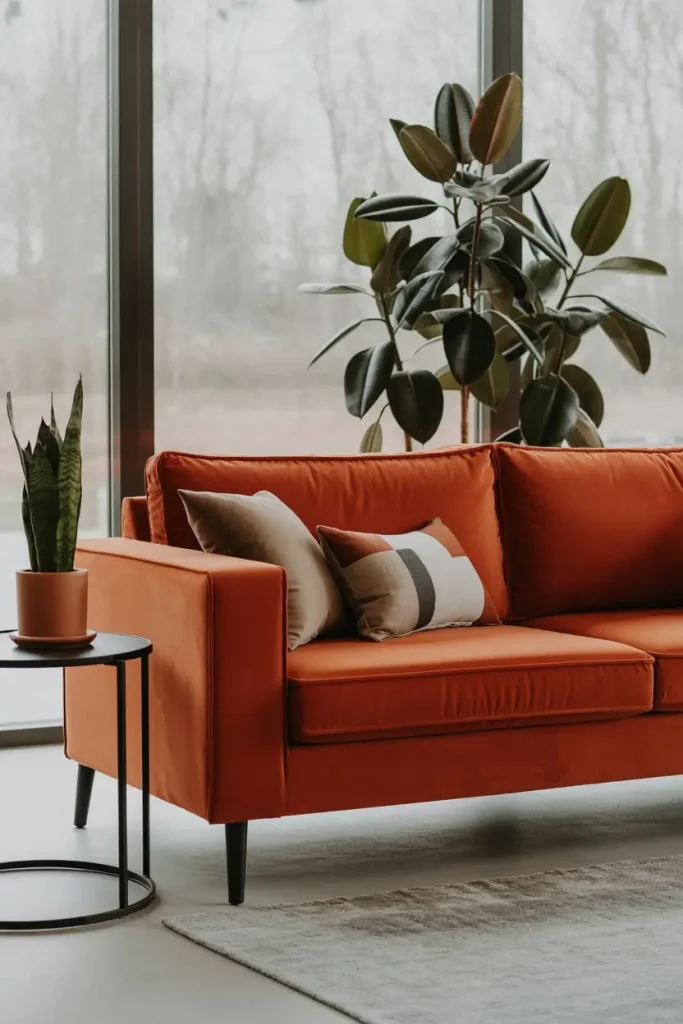
Plants are a simple way to calm bright color. Tall floor plants soften the edge of the sofa and add friendly green tones. Smaller plants on side tables bring texture and life. Choose easy-care varieties if you want low fuss. Plants also help the room feel less studied and more natural. The orange couch then becomes part of a living scene.
15. Choose durable fabrics that age well
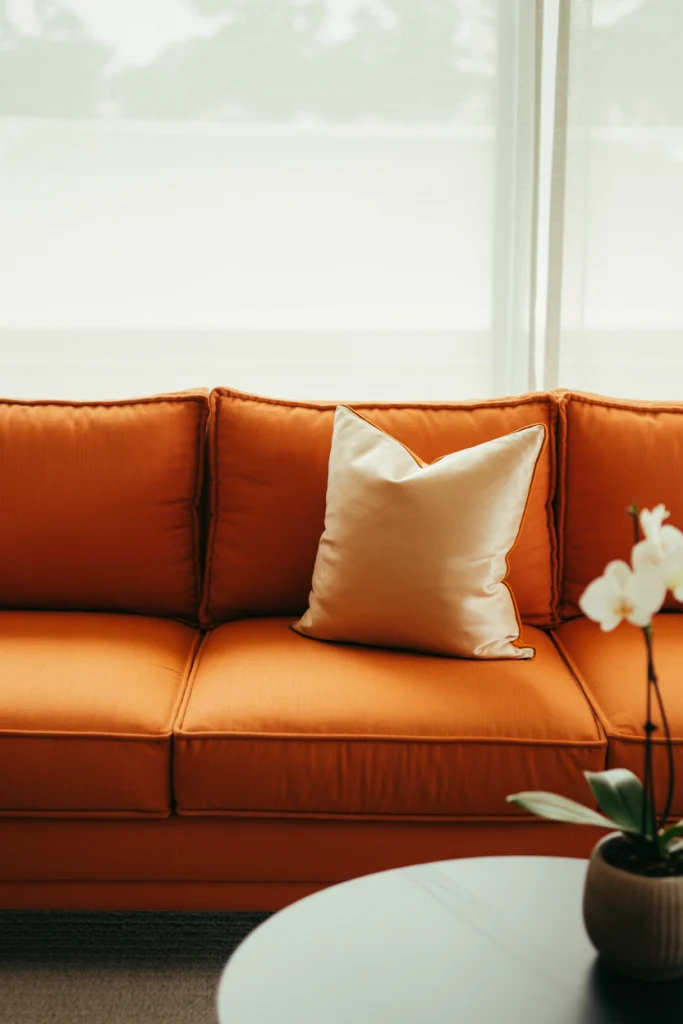
A bright sofa must live with real life. Pick fabric that resists wear and cleans easily. Tight weaves in cotton blends, performance linen, or well-finished velvet work depending on your needs. If you have pets or kids, avoid delicate fibers and light colors on high-contact areas. Removable covers are a smart choice for many families. The right fabric keeps the orange looking fresh year after year.
16. Adapt the mood by switching small pieces by season
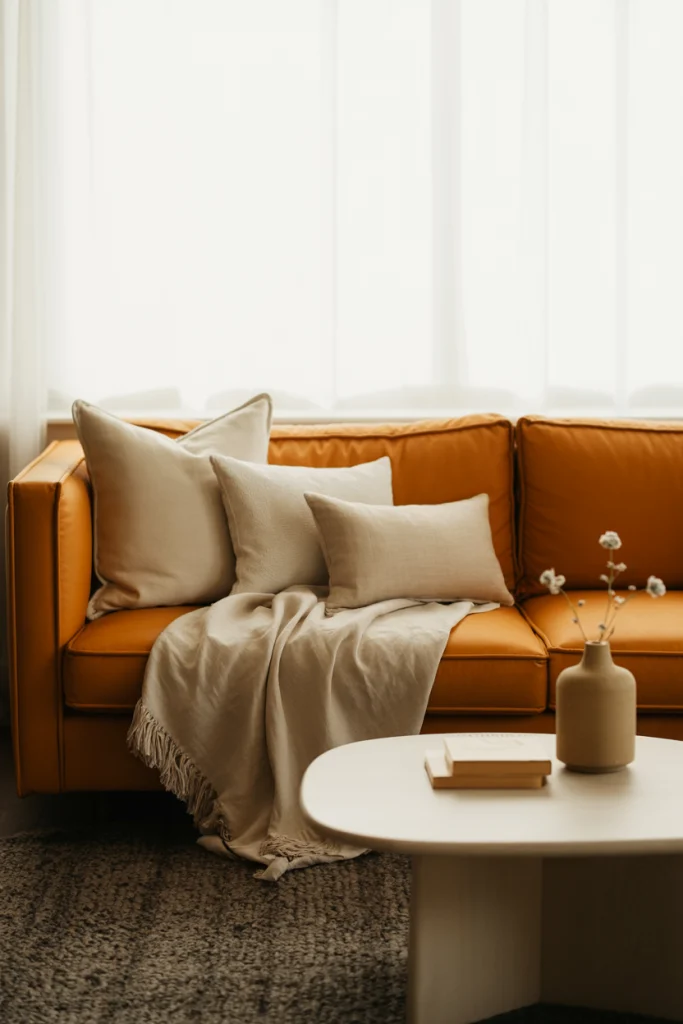
A small swap can change the whole feel. In warmer months, use crisp linens and light rugs with pale tones. In cooler months, bring in heavier throws, darker pillows, and a deeper rug. These changes are simple and low cost but they shift the mood of the room significantly. Seasonal swaps keep the orange couch feeling new and relevant without a big overhaul.






